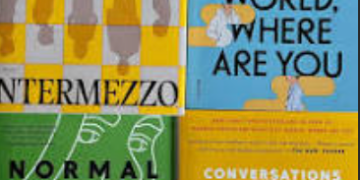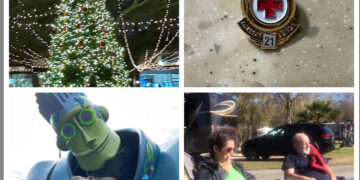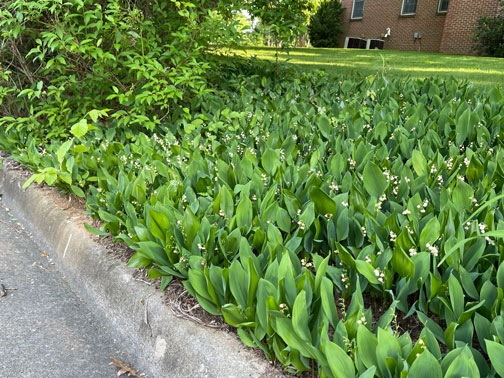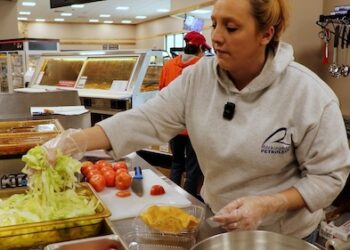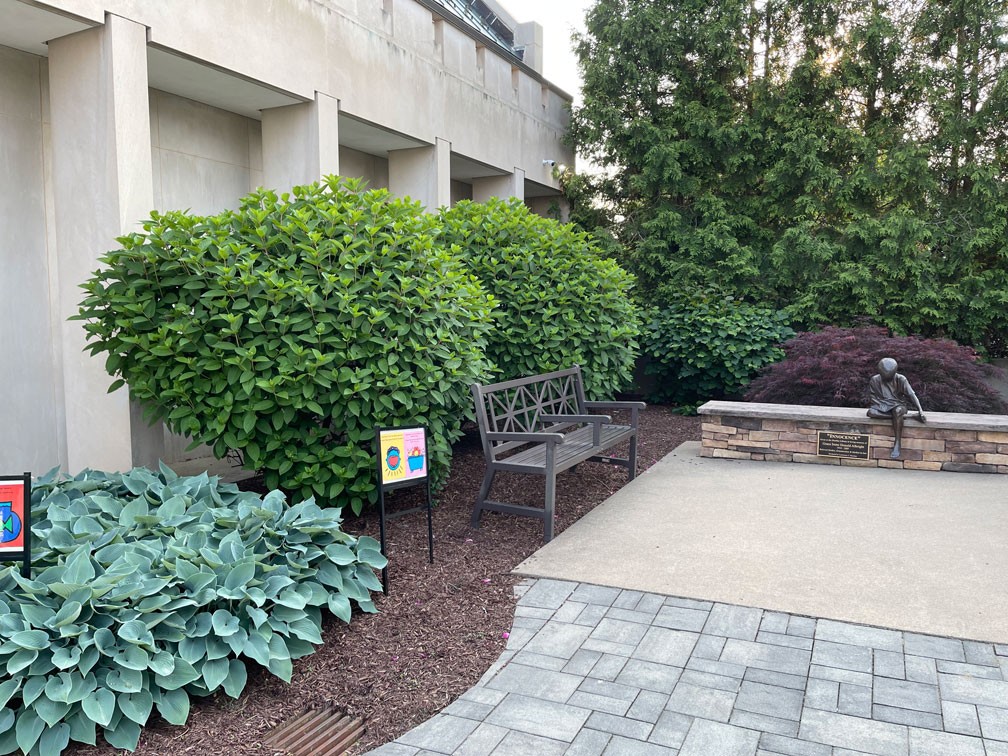
Inside plants bring the same amount of joy to me. I can admire other folks’ beautiful indoor plants, but mine never survive more than a few months. There are two exceptions: a deep purple violet and a snake plant, both of which have lasted twenty years on my kitchen counter. When my son gave me the violet for my birthday, my first reaction was humph, I may as well throw it out now to give it a quick death instead of a lingering one in my house. Somehow, my kitchen window must the be perfect spot for violets. It has survived drought, crowded roots, and even living in a dark stairwell for a few days during holidays. Still, it blooms its heart out. Every time she visited, my late mother Lena, who had all green thumbs, would whisper to the violet, “I know you are doing all these blooms by yourself, because Pat isn’t taking care of you.”
There is one aspect of gardening that I like, and that is knowing the family history of the plants. Plants increase in value in my eyes when they have a connection to family or someone I know. For instance, my dear mother-in-law Mary gave me the snake plant that has survived in my kitchen. Over the years I have shared cuttings of it with co-workers and friends. In the last few years, each of Mary’s grandchildren has received a plant from it, in memory of their grandmother.
Our outside flowers also have stories. The yucca plant comes from my mother’s garden, and I remember that she got hers from her parents’ house. Our daffodils which go crazy with blossoms in the spring came from my mother’s, and one type originally came from her grandmother’s home. When I thin the plants, I share them with teachers at our church’s preschool, spreading memories of my mother’s green thumb all over Winchester. Lena considered her lilies of the valley to be as troublesome as weeds because they spread so quickly. But my neighbor loves the ones we shared, and I smile every time I walk by her bed of lilies of the valley.
What are some of your heirloom flowers? And how about heirloom vegetables? I’m sure some of you save seeds shared by your neighbors or family for special vegetables. Dan doesn’t have room for a big vegetable garden at our house, so we don’t save seeds. But several years ago, he grew some Katie’s heart tomatoes. My mom treasured this plant shared by Katie Sandy, her kind neighbor lady when she was a child. Does anyone still have seeds from Katie’s tomatoes?
Talking about heritage and heirlooms—let’s recap Brocks Gap Heritage Day which was April 22. About 325 people attended, from 11 different states. Visitors came from West Virginia, North Carolina, Pennsylvania, New Jersey, Texas, Florida, Maryland, Tennessee, South Carolina, Indiana, and Virginia. If you missed it, all three programs are now on YouTube. To find them, go to YouTube and search for “Pat Turner Ritchie.” If this doesn’t work for you, email me at patritchie@verizon.net, and I’ll send you the exact link for each program.
It was gratifying at Heritage Day to see folks using my personal library of books for their own research. Out-of-towners are not always aware of published books that might help their research, and they are glad to learn what is available. The big book space at J. Frank Hillyard gave us enough room to spread out the 26 boxes of books that I bring along. We loved the good lighting in the cafeteria which made it easier to read the 190 posters and use the books.
I must give a big thanks to my family members and friends who help set up and take down posters, books, and tables each year. It’s a big (and heavy) job. Refreshments were available from the band boosters this year. We’re already planning for the 32nd annual Brocks Gap Heritage Day and hope to announce the date in a few months.
























